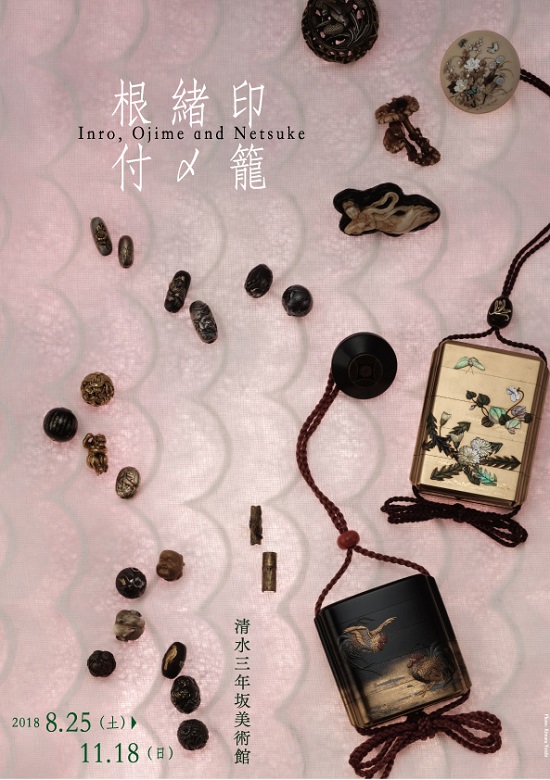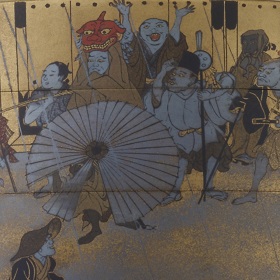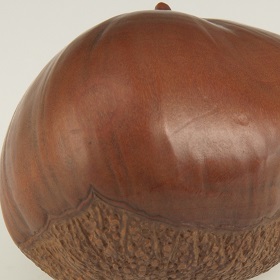
Inro, Ojime and Netsuke
In this exhibit there are displayed approximately 90 items from the museum’s collection of inro, ojime and netsuke produced from the end of the Edo era into the Meiji period. Originally inro were used to hold identity seals, red ink pads, and medicine. In the Edo period, however, they became objects of high fashion in response to a demand for stylish accessories.
An inro was suspended from an obi sash with a cord runner laced down one vertical side of the inro, under the bottom, and up the other side, and then secured by a netsuke, a clasp for the cord. The 3 items, inro, netsuke and ojime, a bead which allowed the opening and closing of the inro lid, were generally used together. And because the 3 items were used as a set, much ingenuity was lavished on matching up the individual designs.
Because the quality of the materials and craftwork of accessories indicated the wearer’s aesthetic taste and social status, men of means wore on their bodies the work they had had made from precious materials by highly-skilled craftsman. In the Meiji period, the abolition of the Edo sumptuary laws and the rise of western style clothing influenced a move toward more luxurious and intricately innovative craftworks and designs free of practical application.
At this exhibit are displayed highly refined works produced using various materials and every sort of engraving, cloisonné, maki-e and inlay technique. We will be satisfied if only you will muse nostalgically back over the fashions of that earlier time and feel an appreciation for the high level of artistry these inro, ojime, and netsuke attained.
 2024-04-26 / 2018-08-25
2024-04-26 / 2018-08-25 

